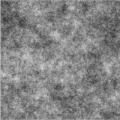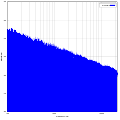Pink noise
Pink Noise
Pink noise, also known as 1/f noise or flicker noise, is a type of random signal that has equal energy per octave. It is named after its resemblance to the color pink, which has a similar distribution of energy across the visible spectrum. Pink noise is commonly found in various natural and man-made systems, and it has been extensively studied in fields such as physics, engineering, and neuroscience.
Characteristics
Pink noise is characterized by its power spectral density, which is inversely proportional to the frequency. In other words, as the frequency increases, the power of the noise decreases. This results in a more balanced distribution of energy across different frequencies compared to other types of noise, such as white noise.
The term "1/f noise" refers to the mathematical relationship between the power spectral density and the frequency. The power spectral density of pink noise decreases by 3 decibels per octave, which corresponds to a decrease of 10 decibels per decade.
Applications
Pink noise has various applications in different fields. In acoustics, it is used for audio testing and calibration purposes. By playing pink noise through a sound system, engineers can analyze the system's frequency response and identify any irregularities or deficiencies.
In neuroscience, pink noise has been found to have beneficial effects on brain activity. Studies have shown that listening to pink noise can improve sleep quality, enhance cognitive performance, and even help with tinnitus relief. It is believed that the balanced energy distribution of pink noise promotes relaxation and reduces distractions.
Pink Noise in Nature
Pink noise can be found in many natural phenomena. For example, the sound of ocean waves crashing onto the shore exhibits a pink noise-like spectrum. Similarly, the rustling of leaves in a forest or the chirping of birds also have characteristics of pink noise.
In addition, pink noise is present in the electrical activity of the brain. Electroencephalography (EEG) recordings of brain waves often show a pink noise-like pattern, indicating the complex and self-organized nature of brain activity.
See Also
References
External Links
Transform your life with W8MD's budget GLP-1 injections from $125.
W8MD offers a medical weight loss program to lose weight in Philadelphia. Our physician-supervised medical weight loss provides:
- Most insurances accepted or discounted self-pay rates. We will obtain insurance prior authorizations if needed.
- Generic GLP1 weight loss injections from $125 for the starting dose.
- Also offer prescription weight loss medications including Phentermine, Qsymia, Diethylpropion, Contrave etc.
NYC weight loss doctor appointments
Start your NYC weight loss journey today at our NYC medical weight loss and Philadelphia medical weight loss clinics.
- Call 718-946-5500 to lose weight in NYC or for medical weight loss in Philadelphia 215-676-2334.
- Tags:NYC medical weight loss, Philadelphia lose weight Zepbound NYC, Budget GLP1 weight loss injections, Wegovy Philadelphia, Wegovy NYC, Philadelphia medical weight loss, Brookly weight loss and Wegovy NYC
|
WikiMD's Wellness Encyclopedia |
| Let Food Be Thy Medicine Medicine Thy Food - Hippocrates |
Medical Disclaimer: WikiMD is not a substitute for professional medical advice. The information on WikiMD is provided as an information resource only, may be incorrect, outdated or misleading, and is not to be used or relied on for any diagnostic or treatment purposes. Please consult your health care provider before making any healthcare decisions or for guidance about a specific medical condition. WikiMD expressly disclaims responsibility, and shall have no liability, for any damages, loss, injury, or liability whatsoever suffered as a result of your reliance on the information contained in this site. By visiting this site you agree to the foregoing terms and conditions, which may from time to time be changed or supplemented by WikiMD. If you do not agree to the foregoing terms and conditions, you should not enter or use this site. See full disclaimer.
Credits:Most images are courtesy of Wikimedia commons, and templates, categories Wikipedia, licensed under CC BY SA or similar.
Contributors: Prab R. Tumpati, MD








